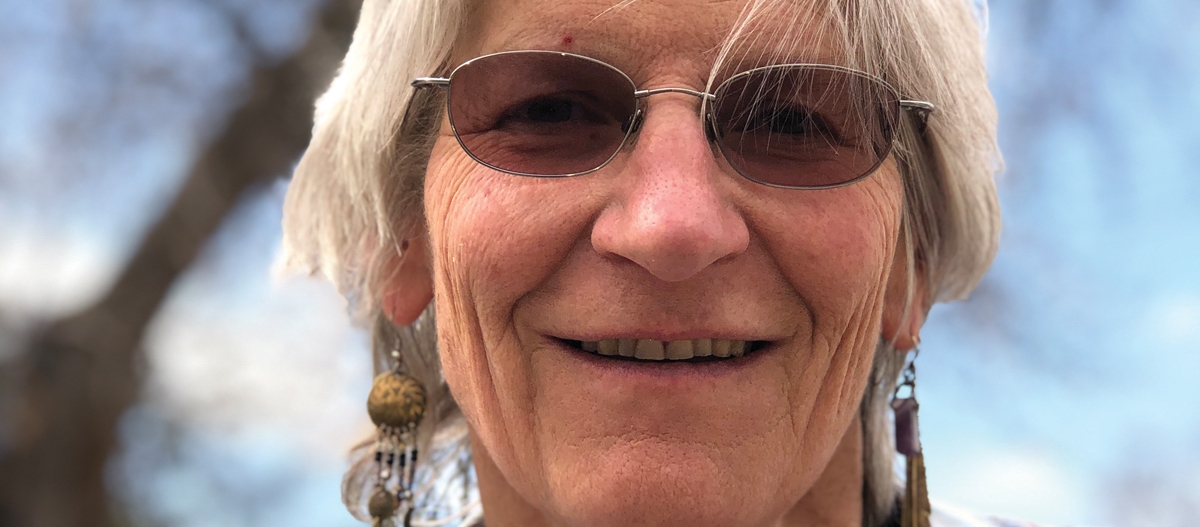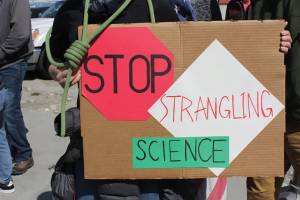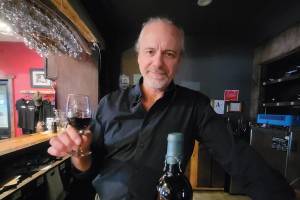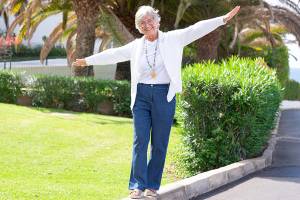By AARON PARRETT
Transitioning into an elderly care facility is stressful enough. But imagine, on top of that, having to worry about being discriminated against because of your sexual identity.
That added anxiety is especially keen for senior LGBTQs in Montana, because they have no federal or state legal protections in matters of housing or accommodation.
Senator Diane Sands (D-Missoula), Montana’s first openly lesbian elected official, is proud of the vast strides Montana has made on the issue of LGBTQs and same-sex marriage, but she noted anxiety about possible elder care discrimination as an issue LGBTQ seniors still face.
“An older lesbian in Miles City was recently fearful that she would not find open-minded caregivers in a nursing or retirement community,” she said. “But many facilities have been proactive on the issue and have been training staff accordingly, which is great.”
Since many LGBTQ baby boomers came of an age or came out when bullying and violence against them was commonplace, it’s not surprising that some lingering anxiety remains about how they might be treated in their vulnerable golden years.
Despite that, June is Lesbian, Gay, Bisexual and Transgender (LGBT) Pride Month, an opportunity to look back at the progress we’ve made in the United States.
Pride Month
Pride month is a celebration inspired by and honoring the 1969 Stonewall uprising in Greenwich Village. Most historians mark that event as a definitive moment in the Gay Liberation Movement in the United States.
What started out as a single-day commemoration at the end of June every year has now expanded in many communities into a month-long series of events, including public picnics, parades, educational workshops, and music festivals.
According to the Library of Congress page devoted to LGBT Pride Month, “The purpose of the commemorative month is to recognize the impact that lesbian, gay, bisexual and transgender individuals have had on history locally, nationally, and internationally.”
Like the rest of the country, Montana has much to celebrate in the way of a sea-change in human rights since 1969. But for many individuals, especially those in the LGBTQ community, Montana still has a long way to go.
The history of LGBTQ rights has marked a relatively swift arc. When the Stonewall uprising took place in 1969, homosexuality was illegal throughout the country. Same-sex marriage would have been unimaginable for most of the public.
Yet, 46 years later, in the landmark case Obergefell v. Hodges, the Supreme Court ruled decisively that prohibitions against same-sex marriages were unconstitutional.
No Longer Felons Under Montana Law
In Montana, prior to 1997, being gay or lesbian meant you were a felon. That very real and ominous legal designation not only demonized about 10 percent of the population, it created a crises in health care in at least two specific ways.
Senator Sands recounted how gay men suffering from HIV were afraid to seek medical care in Montana, because doing so would have made them prosecutable felons under the state’s deviate sexual conduct statutes.
According to Linda Gryczan, a certified mediator and conflict management professional in Helena, the deviate sexual conduct statutes prevented long-term, same-sex partners from making end-of-life or other medical decisions.
“Unless you were a member of the family, you might even be prevented from visiting your significant other in the hospital,” she said.
With support from the LGBTQ community, Senator Sands began work organizing a lawsuit, enlisting six plaintiffs, including Gryczan. The case, taken up by the Women’s Law Center out of Seattle, wound its way through the courts.
In the 1997 Gryczan v. State lawsuit, the Montana Supreme Court ruled the deviate sexual conduct statutes were unconstitutional.
Different Perspectives
Gryczan, now 65, has a lot of perspective on how things have changed across the state over the last 40 years. Like many spokespersons in the LGBTQ community, however, she is careful to preface her views as one perspective among many.
“Being lesbian in Montana is not a monolithic experience,” she cautioned. “Every experience is individual. In the 70s and 80s, there was a whole community of us who were all activists, working together. Many of us were in our 20s then and coming out. We were politically active, as staying ‘hidden’ had been a common experience for us.”
Erin Vang, a custom stats software developer/consultant and concert horn player for the Helena symphony, has her own take on how things have changed for lesbians over the years. “My experience as a lesbian, from coming out to how I’ve lived since, I would probably not call ‘typical,’” she said. “I have not had problems that others have had, for example.”
Frank Clinch of Great Falls is deputy chief council for DPHHS. He realized he was gay around age 13, but, like many others, he didn’t come out until he was in his 20s.
He argued the radical shift in Americans’ attitudes toward homosexuality is due to the openness with which many gay and lesbian people have told their stories.
“Coming out is a key element, and when people tell their stories, people’s views can change,” he said. “Sometime in the 1980s, straight people started to realize that someone they knew was gay, or someone in their family was. People become more accepting when they know someone’s story, I think.”
Now 60, Clinch said coming out still poses risks for people, and is often especially difficult for young people. Things are, however, generally better for LGBTQ people in Montana than they used to be, he noted.
According to Nick Engler of Missoula, the support network for LGBTQ individuals is much better today.
“One big difference between now and back then is that when I wanted to come out around ’78 or ’79, there was not really anything there in the way of support,” he said.
He noted that groups started to emerge in the 70s, including the Alliance for Individual Rights in Great Falls. Out in Montana started sometime in the mid-70s, Engler recalled, although the community center was not established until 1980.
Community Support
Prior to the emergence of such support groups, LGBTQ Montanans often felt isolated.
“I remember reading James Baldwin’s Another Country(1962) when I was 16 or 17, which was a disheartening look at what it was like to be both black and gay in America,” he said.
Tanya Olson of Missoula said the difference between being queer at 50 and being queer at 25 is mainly one of community.
“The older you get, the more you realize what a community you are surrounded by. I look around and think, ‘Wow! We’ve been in this together for 30 years.” If anything, Olson said, the older a person gets, the more comfortable she becomes with identity anyway.
“Coming out in your youth can certainly fill you with anxiety, but if you’re still wrestling with who you are at 50, there’s probably something else going on.”
Gryczan noted that one way to measure progress on LGBTQ issues is simply to look at the evolution of the terminology.
“We started out 40 years ago as ‘gay.’ We added ‘lesbian,’ then became ‘LGB,’ followed by ‘LGBT.’ ‘Q’ was added for queer or questioning. Some write ‘LGBTQ+’ to include ‘2S,’ or two-spirit, and ‘I’ for intersex,” she said. “I am in this movement until we use up the whole alphabet.”
In spite of the landmark decision on same-sex marriage, LGBTQ people still encounter serious discrimination today.
“It is still legal to fire someone for sexual orientation or be kicked out of an accommodation because of gender ID or sexual orientation, for example,”said Gryczan.
Montana’s Progress
Though some communities and cities have protection ordinances, no Montana law prohibits discrimination based on sexual identity.
According Senator Sands, legislators have tried many times over the years to include sexual identity as a protected class barred from discrimination in Montana Law, but so far, the efforts have not succeeded.
“I remain hopeful that it will happen at the state level,” she said. “And many communities have adopted a non-discrimination policy at the city level, including Missoula and Bozeman.”
Engler would agree the state of Montana has come a long way.
“Montana is a kind of live-and let-live state, anyway. When Denise Juneau [openly lesbian congressional candidate] was running against Ryan Zinke, and someone asked him about that, even he said that he didn’t think many Montanans cared about that,” he said. “He expressed it awkwardly, but the gist was that he didn’t think her sexuality would matter to voters. I think that’s progress.”
In a similar vein, Senator Sands recounted her first day in the Montana legislature in 1996 as Montana’s first openly lesbian elected official. For her, it was a rather positive experience.
“Bruce Simon, who was a Republican from Billings, came over very deliberately and put his arm around me,” she recalled. “He said, ‘You’ve made a lot of people in my party nervous over there, but I told them they’ll like you.’”
Montana now has dozens of support groups and centers for the LGBTQ community, including some focused especially LGBTQ seniors.
The Next Step
The national organization SAGE provides advocacy and services for LGBT elders. The organization has a national hotline—the LGBT Aging Center—serving as a resource aimed to improve the quality of services and support for LGBT seniors. Individuals can find support services for each state on the LGBT Aging Center website.
In a span of fewer than 20 years, LGBTQ Montanans have witnessed a state supreme court decision stating they were no longer felons and a U.S. Supreme Court decision sanctioning same-sex marriage.
For Senator Sands, those two landmarks are especially worth celebrating this Pride month.
“When same-sex marriage became legal, it had a profound effect on me,” she recounted. “When your marriage is not legally recognized, you are not considered an equal citizen. When that changed, we changed. Now we are, at least in terms of marriage, equal citizens under the law.”
The next step, according to Sands, is for Montana is to amend the discrimination clauses in the state constitution, to include “sexual orientation” along with “sex,” and “race.” — MSN
For information on resources for LGBT aging issues in your state, visit lgbtagingcenter.org. For more information on LGBTQ listings and events happening around Montana, visit bigskypride.com.









